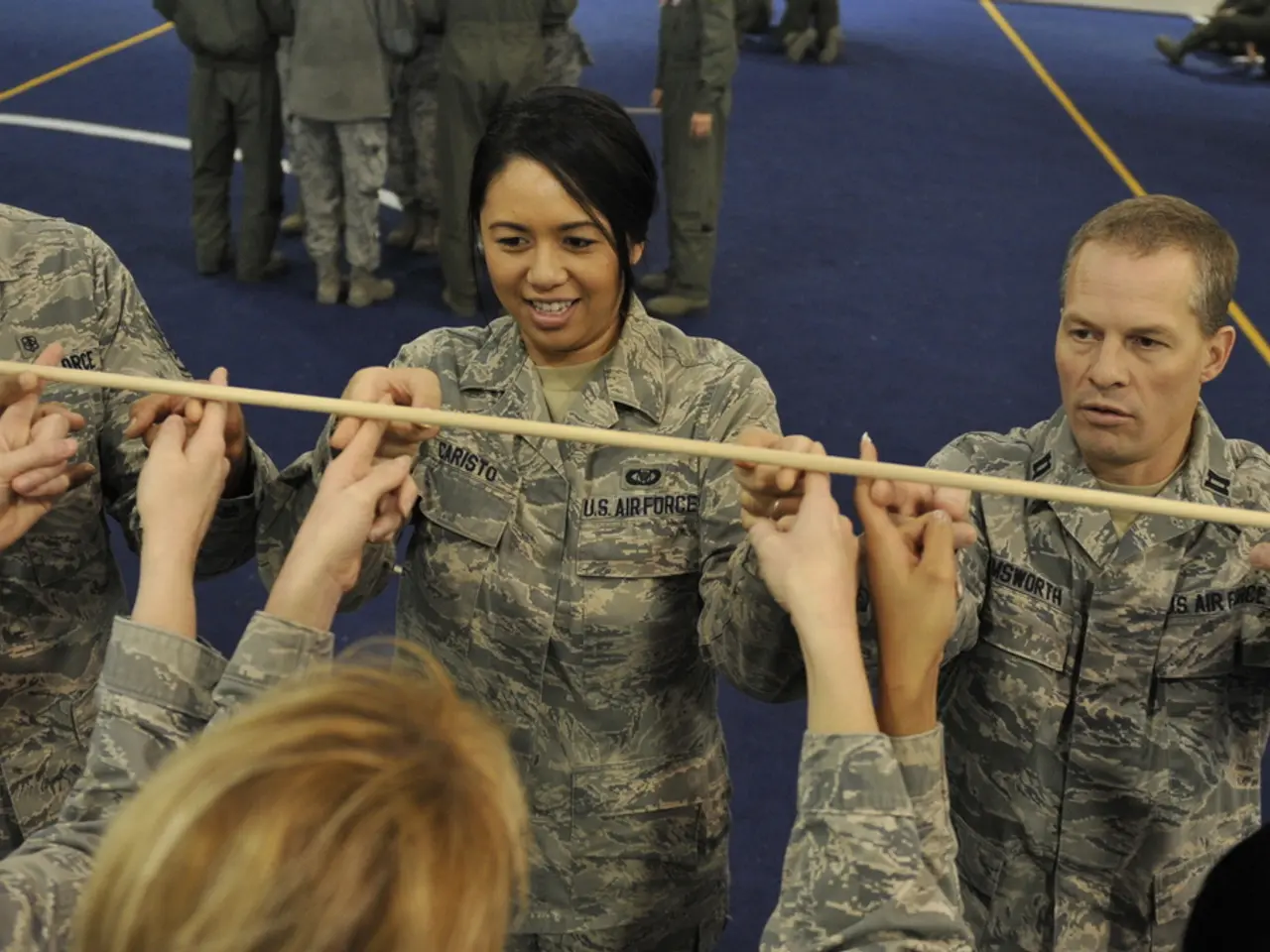Unity in Struggle: The Debate Between Incorporation and Adaptation, and the Challenge of Otherization
The U.S. Department of Defense (DoD), the world's fourth largest employer of civilians, is grappling with the challenge of fostering a more integrated and inclusive environment between its military and civilian workforces. This issue, often referred to as "othering," has been identified as a significant barrier to operational effectiveness.
One of the key strategies for addressing this challenge is enhancing communication and collaboration. Cross-functional teams of military and civilian personnel working together on projects can foster shared understanding and cooperation. Training programs that emphasize team building, mutual respect, and understanding of each other's roles and challenges are also essential.
Technology and process integration are another crucial aspect of this endeavour. Implementing systems like the Civilian Deployment Module, which streamlines data collection and deployment processes, ensures both groups have access to the same information in real-time. Shared digital platforms for communication, planning, and execution can reduce silos and enhance coordination.
Addressing "othering" within military formations is another important strategy. This involves promoting inclusive policies that emphasize shared goals and values within the DoD. Cultural sensitivity training to recognize and overcome biases and stereotypes that contribute to "othering" is also necessary. Engaging senior leaders in promoting a culture of inclusion, where both military and civilian personnel are valued equally, is essential.
Reform and modernization are also key to improving integration. Integrated military advising that involves both military and civilian expertise can align efforts across different levels of conflict and domains. Due process reforms, like those by DCSA, can enhance fairness and transparency in security clearance processes, benefiting both military and civilian personnel.
Cross-training and mentorship programs can also promote understanding and mutual respect. Establishing exchange programs or mentorship initiatives where military personnel can work in civilian roles and vice versa can foster a more integrated and inclusive environment. Offering joint career development opportunities can encourage professional growth and integration.
Despite these efforts, the DoD culture often prioritizes military development over civilian development, according to a 2022 Defense Business Board report. Other DoD entities, such as the Defense Logistics Agency, prioritize workforce and culture integration through detailed strategic planning.
Negative perceptions formed by lived experience can have a powerful and anchoring effect, making it hard to shift or adjust them. A search on Reddit using the keywords "DoD civilians" reveals vocal animosity from some military members toward civilians. The military needs to shift its mindset to push junior leaders to integrate, not assimilate, civilians into workplaces.
In conclusion, improving integration between military and civilian workforces within the U.S. Department of Defense requires a multi-faceted approach, including shifting mindsets, addressing "othering," enhancing communication and collaboration, integrating technology and processes, and promoting reform and modernization. By implementing these strategies, the DoD can foster a more integrated and inclusive environment, reducing "othering" and enhancing overall operational effectiveness.
- Enhancing leadership and fostering a culture of inclusivity in military formations is crucial, involving promoting shared goals and values within the Department of Defense (DoD).
- Technology and process integration, such as implementing systems like the Civilian Deployment Module, are essential for ensuring both military and civilian workforces have real-time access to the same information.
- Cross-functional teams of military and civilian personnel are key to fostering shared understanding and cooperation, with training programs that emphasize team building, mutual respect, and role clarity also being essential.
- Civilian-military relations can be improved through cross-training and mentorship programs, with exchange programs or mentorship initiatives where personnel can work in each other's roles encouraging integration.
- The DoD's defense strategy should prioritize improving education and self-development for both military and civilian personnel, reducing the gap in focus between the two workforces.
- General news outlets and platforms such as Reddit can provide insights into negative perceptions towards civilians within the military. It is important for the military to shift its mindset to promote integration of civilians, not assimilation, into workplaces.




